As long as I can remember, I’ve been a zoom lens user first, and a prime lens user second. While I have both types of lenses, I find myself coming back to the more versatile zoom lens time and time again.
With Covid-19 in full swing in Michigan, many of our events have taken place outside across the downtown area so people can socially distance. In turn, I’ve had to capture these events in different ways than usual, oftentimes from further back that I would like. It’s times like these when a fast zoom lens really comes in handy — especially a telephoto like the Tamron 70-180mm f/2.8.
The Tamron allows me to get in close to my subjects without actually physically being in close for them. Recently I’ve used this lens for a community running event and at a Stop Asian Hate rally. But where it came in handy the most was when I had to capture performers across the city — at night.

Why I keep coming back to an f/2.8 telephoto zoom
The third lens I ever bought was a Tamron 70-200mm f/2.8 for my Nikon D5100. Since then, I’ve kind of had an obsession for f/2.8 zooms. When you’re dealing with potentially terrible lighting conditions, having a fast zoom lets you still get the shot. Compared to a variable aperture lens, a fixed f/2.8 zoom means you can set your settings and be done with them.
At the same time, you don’t have to worry as much about increasing ISO or lowering your shutter speed, because the lens natively allows you to bring in more light to your shot.
Recently I photographed a workout class. It took place outside in an alley and parking garage.The light underneath the parking garage wasn’t exactly pristine. But having the Tamron 70-180mm really helped me capture it well.
.mgl-tiles { display: none; } #mgl-gallery-634ef3584c2af { margin: -5px; width: calc(100% + 10px); } #mgl-gallery-634ef3584c2af .mgl-box { padding: 5px; } @media screen and (max-width: 768px) { #mgl-gallery-634ef3584c2af { margin: -5px; width: calc(100% + 10px); } #mgl-gallery-634ef3584c2af .mgl-box { padding: 5px; } } @media screen and (max-width: 460px) { #mgl-gallery-634ef3584c2af { margin: -5px; width: calc(100% + 10px); } #mgl-gallery-634ef3584c2af .mgl-box { padding: 5px; } }
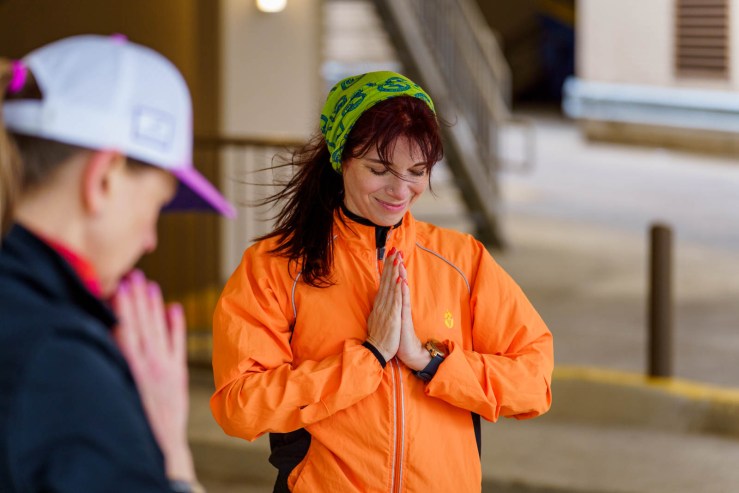
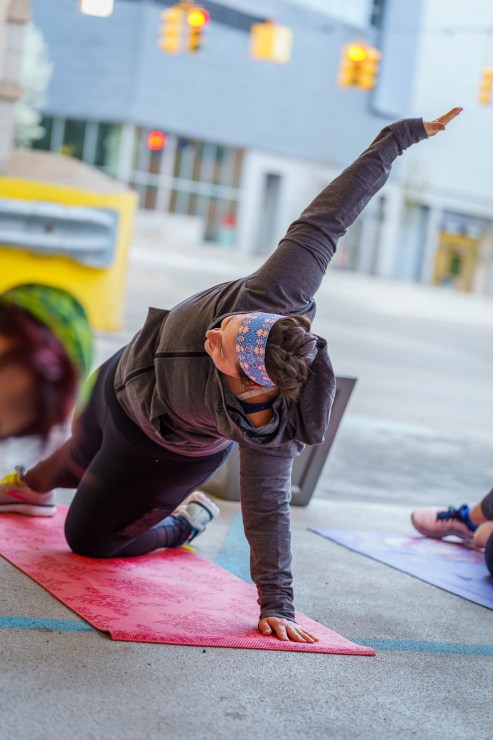
With the Tamron 70-180mm, I love how it’s compact and lightweight. I can comfortably handhold my Sony a7 III with battery grip, along with the lens and a speedlight atop my camera. I know I’ll get great results because I can rely on consistency with that constant aperture.
Because of this, I didn’t have to worry about taking a bunch of different gear with me to a recent Stop Asian Hate rally. The f/2.8 aperture let me achieve background blur behind the speakers, while also letting me quickly change it for when I was capturing participants in the crowd.
.mgl-tiles { display: none; } #mgl-gallery-634ef3584ced5 { margin: -5px; width: calc(100% + 10px); } #mgl-gallery-634ef3584ced5 .mgl-box { padding: 5px; } @media screen and (max-width: 768px) { #mgl-gallery-634ef3584ced5 { margin: -5px; width: calc(100% + 10px); } #mgl-gallery-634ef3584ced5 .mgl-box { padding: 5px; } } @media screen and (max-width: 460px) { #mgl-gallery-634ef3584ced5 { margin: -5px; width: calc(100% + 10px); } #mgl-gallery-634ef3584ced5 .mgl-box { padding: 5px; } }

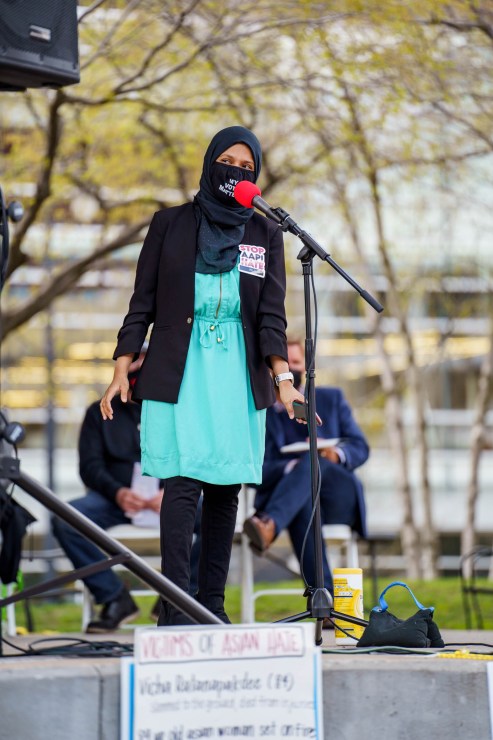
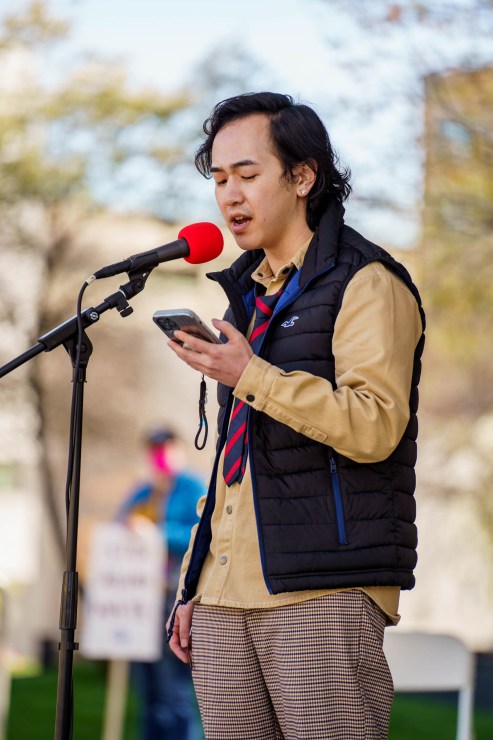
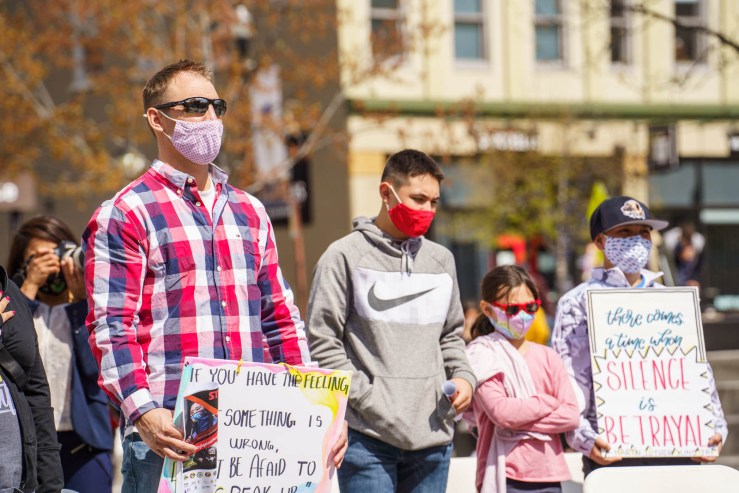
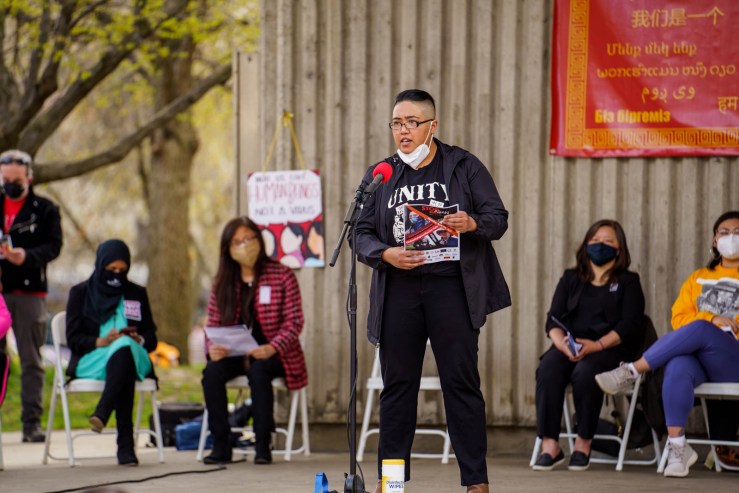
Let there be light
When I first added my Sony a7 III to my arsenal over the summer, I wanted it for one reason — low light performance. As someone who has had to photograph a ton of outdoor events after dark, having f/2.8 zooms and the occasional f/1.8 prime has really benefited me.
By not having to raise my ISO as much (because I can bring more light into my camera), I can achieve better image quality. Or, if I’m shooting something that’s fast-action, I can bump up my shutter speed without having to worry as much about losing light in my photo.
.mgl-tiles { display: none; } #mgl-gallery-634ef3584e59b { margin: -5px; width: calc(100% + 10px); } #mgl-gallery-634ef3584e59b .mgl-box { padding: 5px; } @media screen and (max-width: 768px) { #mgl-gallery-634ef3584e59b { margin: -5px; width: calc(100% + 10px); } #mgl-gallery-634ef3584e59b .mgl-box { padding: 5px; } } @media screen and (max-width: 460px) { #mgl-gallery-634ef3584e59b { margin: -5px; width: calc(100% + 10px); } #mgl-gallery-634ef3584e59b .mgl-box { padding: 5px; } }

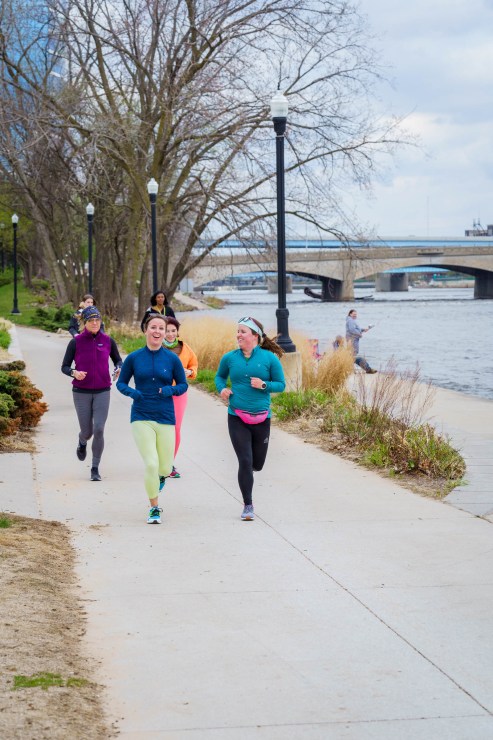
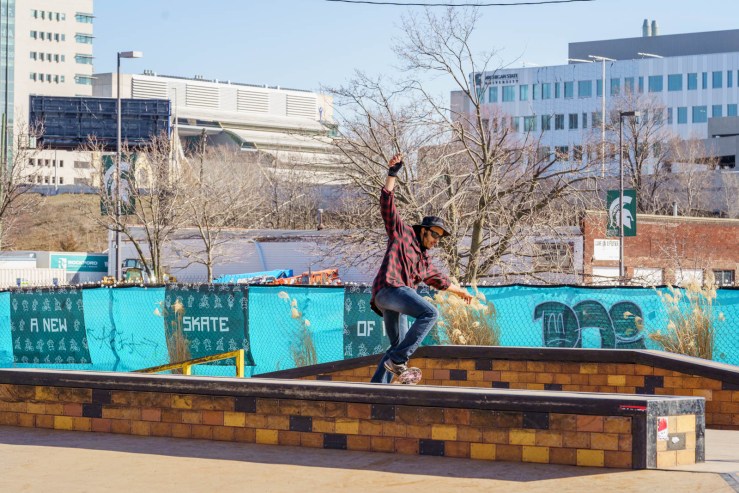
While f/2.8 lenses are typically pricier than variable aperture lenses, they provide you more versatility in your photography. This ultimately leads to you having more opportunities to get the shot you need, which is a win-win for you and your client.
Tamron 70-180mm f/2.8 Di III VXD Lens for Sony E
Flexible zoom range, fast design, and compact profile, the Tamron 70-180mm f/2.8 Di III VXD is a unique take on the ubiquitous and popular telephoto zoom. Designed for full-frame Sony E-mount cameras, this lens spans a useful short-telephoto to mid-telephoto range and is characterized by its f/2.8 maximum aperture to suit working in available light conditions and for controlling depth of field.
See pricing and availability
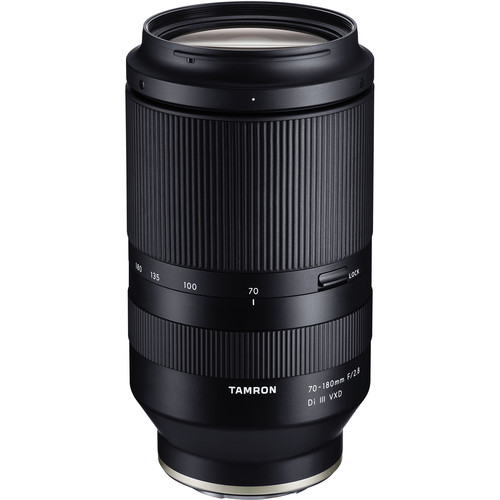
Tell your story with the second annual Visual Storytelling Conference!
Experience four days of interactive, online training sessions featuring a range of educational content with experienced photographers and content creators. This free event kicks off with a series of technical boot camps to build essential skills, followed by live, online sessions on photography, video, business and social media. Join live from March 10-13, 2022!
